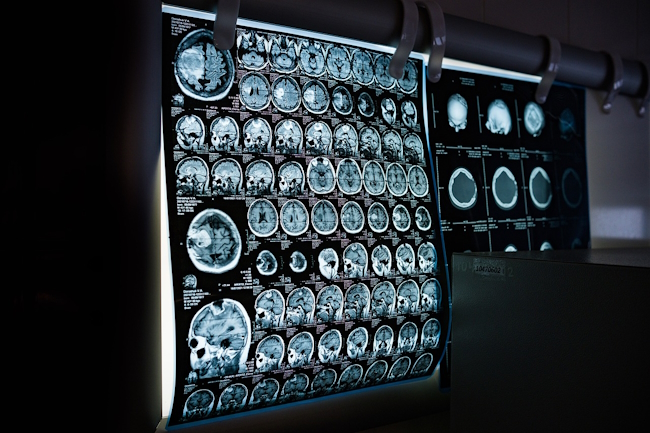Degenerative Cervical Myelopathy (DCM) has historically been regarded as a disease of the cervical spinal cord. After all, it is the cervical spinal cord that undergoes degenerative changes that result in many of the debilitating symptoms reported by patients with DCM. It logically follows that most DCM research to date has focussed on characterising the abnormalities that occur at the level of the cervical spinal cord.
That is until recently, where advances in neuroimaging (particularly MRI) have allowed researchers to explore the impact of DCM beyond the spinal cord, and particularly its impact on the brain. At first glance, studying the brain in a disease of the spinal cord, such as DCM, may seem irrelevant. However, studying the brain might provide us with new knowledge that studying the spinal cord would otherwise not. For example, can studying the brain help better explain symptoms, such as blurred vision, reported by patients with DCM that are unlikely to be related directly to damage at the level of the spinal cord? Perhaps studying the brain provides a useful prognostic marker for surgeons to identify which and when patients may benefit from surgery?
Indeed, emerging evidence has shown that the brain may play a more significant role in the pathology of DCM, and this may have significant implications for how we research and manage DCM.
Why Was This Study Conducted?
In order to identify the significance of the brain in DCM pathology, we conducted a systematic review. A systematic review is a type of study that compiles findings from previous studies that are all interested in the same question – here, that is studies that investigated changes in brain structure and/or function in patients with DCM using MRI scans.
We asked three key questions:
- Do patients with DCM have changes in their brain structure or function and, if so, which brain regions are impacted?
- Do changes in brain structure or function relate to clinical measures of DCM severity?
- What is the significance of brain changes to the research and management of DCM going forwards?
What We Discovered
Our study identified 47 previous studies that used MRI to investigate brain changes in DCM, with a total of 1500 patients with DCM included overall. We found that patients with DCM have both structural and functional changes in their brain in response to DCM, but also critically in response to surgery. We broadly characterise these changes into two categories.
First, there are some regions of the brain that have become less functional as a result of damage to the spinal cord in DCM. We propose that areas of the brain connected to damaged regions of the spinal cord will subsequently also become weaker, analogous to a muscle that has become weakened after lack of use. This is important because damage to these regions of the brain provide a more intuitive scientific basis for patient reported symptoms (e.g. blurred vision) that do not anatomically localise to the spinal cord.
Secondly, the brain (being the elegant structure that it is) is able to undergo compensatory changes that can preserve some function that may otherwise be lost in patients with DCM. Understanding how patients with DCM are able to tolerate compression of their spinal cord through changes in their brain may be an important future indicator of which patients may benefit from surgery and/or when surgery should be offered.
How This Impacts DCM Going Forward
Going forward, DCM should be considered a disease affecting of the entire central nervous system (both spinal cord and brain). MRI of the brain provides researchers an elegant and important tool for future work in deciphering the exact mechanisms of how DCM affects the central nervous system. This in turn may provide novel avenues for diagnosing and treating DCM, such as therapies that enhance the brain’s ability to compensate for spinal dysfunction.
Want to Read The Full Study?
https://www.thelancet.com/journals/ebiom/article/PIIS2352-3964(23)00481-4/fulltext
Rafati Fard A, Mowforth OD, Yuan M, Myrtle S, Lee KS, Banerjee A, et al. Brain MRI changes in degenerative cervical myelopathy: a systematic review. EBioMedicine. 2024 Jan;99:104915.

